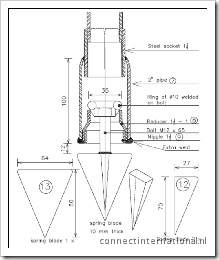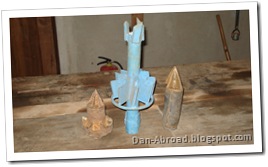 Appropriate technology. It’s quite a buzz word in the development community and only a few years ago it was on everyone’s lips at EWB. Fast forward to the present day and in some circles within our organization it has become taboo. To mention appropriate technology makes you look outdated, old-fashioned and a little ignorant, “don’t you know that we tried that and it didn’t work?”.
Appropriate technology. It’s quite a buzz word in the development community and only a few years ago it was on everyone’s lips at EWB. Fast forward to the present day and in some circles within our organization it has become taboo. To mention appropriate technology makes you look outdated, old-fashioned and a little ignorant, “don’t you know that we tried that and it didn’t work?”.
Our founders and co-CEOs sarcastically talk about their vision founding EWB as flying over Canadian-designed solutions to technical development problems overseas in helicopters. As an organization we very quickly changed this approach to be more balanced and addressed the needs that weren’t being fulfilled in the development community. As I think Playpumps International has demonstrated very well to the development community for an NGO to be centered solely around a technology or technology in general is flawed and can be a hindrance to a country’s development more than a help (wondering what I’m talking about? See Volunteer Owen Scott’s posts on the playpump). “Development” can be defined as many things, but primarily it is a process of people, and thus primarily you should be involving people. That is however not to say that appropriate technologies should not play a part.
 My placement is actually highly centered and focused on an “appropriate technology”, Baptist Drilling (named after Baptist Missionary, Mr Terry Waller) and how it can be employed in a sustainable business. Baptist drilling is a manual drilling technique that falls into a group of “percussion drilling” methods. Percussion drilling essentially means moving a pointed weight on a cable (the “bit”) up and down to create a dent in the ground. This dent is the filled with water and a valved tube is lowered to remove the resulting muddy sludge, then the process is repeated. Baptist Drilling only differs slightly in that the bit is on the end of the valved tube, and thus you save time not having to replace the two pieces.
My placement is actually highly centered and focused on an “appropriate technology”, Baptist Drilling (named after Baptist Missionary, Mr Terry Waller) and how it can be employed in a sustainable business. Baptist drilling is a manual drilling technique that falls into a group of “percussion drilling” methods. Percussion drilling essentially means moving a pointed weight on a cable (the “bit”) up and down to create a dent in the ground. This dent is the filled with water and a valved tube is lowered to remove the resulting muddy sludge, then the process is repeated. Baptist Drilling only differs slightly in that the bit is on the end of the valved tube, and thus you save time not having to replace the two pieces.
 Compared to drilling with a machine Baptist Drilling (and many other manual methods) are cheaper and less complex as well as being able to reach remote areas where the roads are impassable for drill rigs. However, a manual drill cannot penetrate stone layers When compared to digging wells by hand it reduces risk to the digger, is easier to protect from contamination and can penetrate deeper into the aquifer, reducing the likeliness of winter dry-up. All in all, it’s an advantageous technology and well worth pursuing. The challenge is employing this drilling technique in a profitable way. How can you turn manual drilling into a business?
Compared to drilling with a machine Baptist Drilling (and many other manual methods) are cheaper and less complex as well as being able to reach remote areas where the roads are impassable for drill rigs. However, a manual drill cannot penetrate stone layers When compared to digging wells by hand it reduces risk to the digger, is easier to protect from contamination and can penetrate deeper into the aquifer, reducing the likeliness of winter dry-up. All in all, it’s an advantageous technology and well worth pursuing. The challenge is employing this drilling technique in a profitable way. How can you turn manual drilling into a business?
Where we’re planning to start is where there is already demand in Malawi, the NGO sector. Drilling wells for NGO's seems the logical step to reduce risk as we launch a new business. This is where the demand already exists in the sector and provides the opportunity to gain experience with the drilling technique, and reduce the unknowns at lower risk (where a large NGO could absorb costs in the event of problems).
More interesting though is whether we can find demand in the private sector. Namely, are there individuals living in rural areas of Malawi who are both able and willing to pay for clean water? This introduces a plethora of issues, the most complex being assigning a monetary value to safe drinking water.
Hungry? Check out the new recipes section of this blog! I’m looking to turn it into a cookbook to sell as a fundraising item for the Waterloo chapter of Engineers Without Borders Canada and would love your feedback.
Daniel
The photos and the background on Baptist drilling in this post were taken from the Connect International (www.connectinternational.nl) manual on Baptist Drilling by Henk Holtslag and John de Wolf.
No comments:
Post a Comment